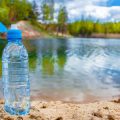Introduction to Sustainable Camping
As more people explore the great outdoors, sustainable camping is becoming a top priority—especially in U.S. national parks. From Yosemite to Yellowstone, campers are now more aware of their environmental impact and are looking for ways to enjoy nature without harming it. One of the best ways to do this is by using solar power during your camping adventures.
Eco-conscious camping means making choices that help preserve the natural beauty and resources of our national parks. It’s about reducing waste, minimizing carbon emissions, and respecting wildlife habitats. Solar power is a clean, renewable energy source that allows campers to stay powered up while staying green.
Why Sustainability Matters in National Parks
National parks are some of the most pristine areas in the country, home to unique ecosystems and wildlife. These protected lands face increasing pressure from high visitor numbers and climate change. When campers use traditional fuel sources like gas generators or disposable batteries, they contribute to pollution and noise—both of which can disturb wildlife and damage fragile environments.
By choosing solar-powered gear, youre doing your part to:
- Reduce carbon footprint
- Lower noise pollution
- Avoid hazardous waste from batteries or fuel
- Promote long-term conservation of park resources
The Rise of Eco-Friendly Camping Gear
Thanks to advances in technology, its easier than ever to camp sustainably. Solar-powered tools like lanterns, phone chargers, and even coolers have become more affordable and efficient. This shift makes it simple for campers at every level—from weekend warriors to van-lifers—to go green without sacrificing comfort or convenience.
Common Solar Gear for Campers
| Item | Description | Benefits |
|---|---|---|
| Solar Lanterns | Rechargeable lights powered by the sun | No batteries needed; great for trails and tents |
| Solar Panels | Portable panels for charging devices or batteries | Silent, clean energy on demand |
| Solar-Powered Coolers | Keeps food cold without ice or propane | Reduces waste and extends trips without restocking |
| Solar Showers | Bags that heat water using sunlight | Convenient hygiene solution with zero energy cost |
Join the Movement
Sustainable camping isn’t just a trend—it’s a responsibility. By choosing solar power and eco-friendly practices, you help protect the wild places we all love. Whether youre camping under redwoods in California or hiking through the Rockies, small changes make a big difference when we all pitch in.
2. Why Go Solar? The Environmental Benefits
Camping in America’s stunning national parks is all about connecting with nature—and what better way to honor that connection than by choosing solar power? Swapping gas generators for solar panels isn’t just a tech upgrade; its a meaningful way to reduce your environmental impact and help keep these treasured landscapes pristine for future generations.
Lower Your Carbon Footprint
Traditional camping gear like gas-powered generators emit carbon dioxide and other pollutants into the air. These emissions contribute to climate change and degrade air quality, even in remote areas. By using solar-powered gear—like lanterns, battery packs, or portable panels—you’re tapping into clean, renewable energy from the sun. That means zero emissions and cleaner air all around.
Protect Fragile Ecosystems
National parks are home to delicate ecosystems that can be easily disturbed by noise, fumes, and human activity. Gas generators not only pollute the air but also create loud noises that can disrupt wildlife behavior and stress animals. Solar energy is silent and emission-free, making it a much more wildlife-friendly option.
Preserve Natural Beauty
No one heads to a national park hoping to hear the rumble of a generator or smell gas fumes while enjoying a sunset. Solar power helps maintain the peaceful atmosphere that makes camping in national parks so special. Plus, fewer fuel spills and trash from single-use batteries mean cleaner campsites and trails.
Quick Look: Solar vs. Gas Power While Camping
| Feature | Solar Power | Gas Generator |
|---|---|---|
| Emissions | Zero | High (CO2, fumes) |
| Noise Level | Silent | Loud |
| Impact on Wildlife | Minimal | Disruptive |
| Fuel Source | Sunlight (renewable) | Gasoline (non-renewable) |
| Campsite Cleanliness | No fuel or waste needed | Potential for spills & litter |
A Simple Switch with Big Impact
You don’t need a full-blown solar setup to make a difference. Even small changes—like using a solar charger for your phone or switching to solar lanterns—can have a big impact over time. Every watt of solar energy used is one less coming from fossil fuels, helping you tread lighter on the land you love to explore.

3. Practical Uses for Solar Power While Camping
When youre camping in one of Americas beautiful national parks, having reliable, eco-friendly power can make your trip more comfortable while keeping your environmental impact low. Solar power is a great solution for off-grid energy needs, and there are plenty of practical ways to use it during your outdoor adventures.
Popular Solar-Powered Gadgets for Campers
Here are some of the most commonly used solar-powered devices that campers rely on during their trips:
| Gadget | Description | Why Its Useful |
|---|---|---|
| Solar Lanterns | Rechargeable lanterns powered by built-in solar panels. | Provide reliable lighting at night without needing batteries or fuel. |
| Portable Solar Panels | Foldable or roll-up panels that capture sunlight to charge devices. | Great for charging phones, GPS units, and cameras during the day. |
| Solar-Powered String Lights | Decorative lights with small solar panels for ambient lighting. | Adds charm to campsites and helps light up common areas after dark. |
| Portable Solar Generators | Compact power stations that store solar energy. | Can run small appliances like mini-fridges or fans; perfect for extended stays. |
How Campers Use Solar Setups in Real Life
Many campers set up their portable solar panels on picnic tables, the roof of their RV, or directly on the ground in a sunny spot. During the day, these panels collect energy which is stored in portable batteries or generators. This stored power is then used throughout the evening to charge phones, cook meals with electric stoves, or run LED lights around the campsite. For backpackers and minimalist campers, compact solar chargers that attach to a backpack can keep essential gear powered while on the move.
Tips for Getting the Most Out of Your Solar Gear
- Angle Matters: Position your panels to face direct sunlight for maximum efficiency.
- Keep Them Clean: Dust or debris can reduce performance, so wipe them down regularly.
- Plan Ahead: Charge devices during peak sunlight hours (usually late morning to mid-afternoon).
Why It Matters
Using solar power not only gives you independence from traditional electricity sources but also helps preserve the natural beauty of national parks. By choosing clean energy options, youre doing your part to protect the environment while enjoying all that nature has to offer.
4. Cost-Effective and Convenient Energy Solutions
One of the biggest perks of switching to solar power while camping in national parks is how much money you can save over time. While the upfront cost of solar gear—like portable panels, solar chargers, or solar-powered lanterns—might seem high, it quickly pays off when compared to constantly buying disposable batteries or fuel for gas-powered generators.
Why Solar Gear Makes Financial Sense
Think about how many times youve had to run to a store before a trip just to stock up on AA batteries or refill a propane tank. These small purchases add up fast. With solar gear, you’re tapping into free energy from the sun, which means fewer trips to the store and less money spent overall.
Cost Comparison: Traditional vs Solar Camping Power
| Item | Traditional Power (Annual Cost) | Solar Power (One-Time Cost) |
|---|---|---|
| Disposable Batteries | $60–$100 | $0 (after initial investment) |
| Fuel for Generators | $150–$300 | $0 (solar doesnt need fuel) |
| Portable Generator Maintenance | $50–$100 | $0 (minimal maintenance) |
| Basic Solar Panel Kit | N/A | $150–$250 (one-time) |
| Solar Lanterns/Chargers | N/A | $20–$80 each (one-time) |
No More Last-Minute Runs for Power Supplies
Using solar also means you won’t be caught off guard with dead batteries or an empty fuel tank. As long as there’s sunshine—and even on cloudy days with good equipment—you’ll have a steady supply of power for your lights, phones, GPS devices, or even mini coolers.
Bonus: Less to Pack and Carry
Without the need for heavy fuel cans or piles of backup batteries, your gear becomes lighter and more streamlined. That’s especially helpful if youre hiking into backcountry campsites or trying to keep your RV setup simple.
5. Respecting Park Rules and Enhancing the Experience
Using solar power while camping in national parks isnt just about going green — its also about being a responsible camper. Many national parks in the U.S. have specific rules to protect natural resources and preserve the environment for future visitors. Solar energy aligns perfectly with these goals, especially when following Leave No Trace principles.
How Solar Power Supports Leave No Trace
The Leave No Trace principles are all about minimizing your impact on nature. One of the biggest ways campers can do this is by reducing their reliance on fossil fuels like gas or propane, which can spill, create emissions, and leave behind waste. Solar gear like panels, lanterns, and chargers help eliminate that footprint.
Examples of How Solar Helps Meet Leave No Trace Goals:
| Leave No Trace Principle | How Solar Power Helps |
|---|---|
| Dispose of Waste Properly | No fuel canisters or batteries to throw away |
| Minimize Campfire Impacts | Use solar lights instead of campfires for visibility at night |
| Be Considerate of Other Visitors | Solar gear runs quietly, unlike gas generators |
| Respect Wildlife | No chemical smells or noise that might disturb animals |
Meeting National Park Regulations
Many U.S. national parks have restrictions on generator use due to noise and air pollution. Some even limit generator hours or ban them entirely in certain areas. By using solar power, you’re automatically staying within these rules — no need to worry about fines or disturbing other campers.
Common Generator Restrictions vs. Solar Advantages:
| Generator Rule | Solar Advantage |
|---|---|
| No use during quiet hours (usually 10 PM–6 AM) | Solar battery banks store energy silently for overnight use |
| Banned in backcountry zones | Portable solar panels are lightweight and allowed everywhere |
| Noise complaints from nearby campers | No moving parts = silent operation |
A Better Camping Experience for Everyone
When you choose solar, youre helping keep the park clean, quiet, and enjoyable — not just for yourself but for everyone around you. Whether youre charging a phone, lighting up your tent, or powering a mini-fridge, solar energy makes it easy to stay comfortable without compromising the natural beauty around you.
So next time you head into a national park, think solar. It’s better for the earth, respects the rules, and gives you peace of mind as you soak in nature’s best.

